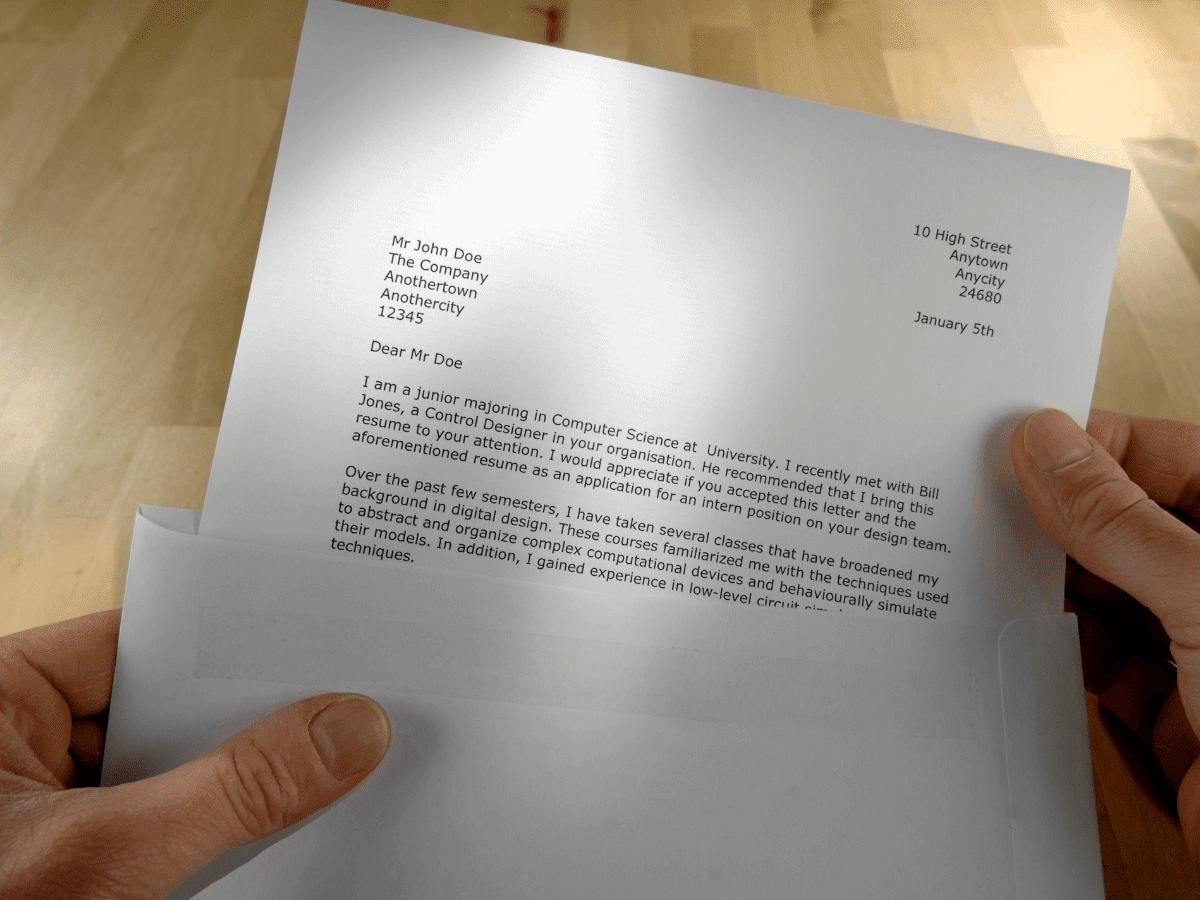كيف تكتب رسالة رسمية باللغة الإنجليزية؟
تُعتبر كتابة الرسائل الرسمية باللغة الإنجليزية مهارة أساسية للعديد من الأغراض، سواء كانت أكاديمية، مهنية، أو قانونية. تتطلب الرسائل الرسمية استخدام صيغة مهنية، لغة دقيقة، وأسلوب واضح وموجز. المقال التالي يشرح بالتفصيل كيفية كتابة رسالة رسمية باللغة الإنجليزية، بما في ذلك العناصر الأساسية التي يجب تضمينها، الأسلوب المثالي للكتابة، وبعض الأمثلة العملية.
مقدمة عن الرسائل الرسمية باللغة الإنجليزية
الرسائل الرسمية هي الوسيلة الأساسية للتواصل في الأوساط المهنية والأكاديمية. تُستخدم هذه الرسائل لتوثيق المعاملات، تقديم الطلبات، إرسال الشكاوى، أو حتى للتعبير عن الامتنان بشكل رسمي. وتُعد الرسائل المكتوبة بشكل صحيح وسيلة فعالة للتواصل وإظهار الاحترافية، لذلك فإن تعلم كيفية كتابتها هو جزء مهم من الحياة العملية.
الأجزاء الأساسية للرسالة الرسمية باللغة الإنجليزية
1. العنوان Header
يجب أن يحتوي الجزء العلوي من الرسالة على تفاصيل دقيقة لتحديد المرسل والمستقبل. ينقسم هذا القسم إلى:
- تفاصيل المرسل:
- الاسم الكامل.
- العنوان.
- البريد الإلكتروني ورقم الهاتف.
- تاريخ الكتابة:
يتم كتابة التاريخ بالصيغة الإنجليزية الشائعة مثل:- January 15, 2024
- تفاصيل المستقبل:
- الاسم الكامل للمستقبل.
- المسمى الوظيفي.
- اسم الشركة أو المؤسسة.
- العنوان.
مثال:
John Smith
123 Elm Street
New York, NY, 10001
Email: [email protected]
Phone: +1 123-456-7890
January 15, 2024
Ms. Sarah Johnson
HR Manager
XYZ Corporation
456 Oak Street
Los Angeles, CA, 90001
2. التحية Salutation
- إذا كنت تعرف اسم الشخص:
- “Dear Mr. Smith,”
- “Dear Ms. Johnson,”
- إذا كنت لا تعرف الاسم:
- “Dear Sir or Madam,”
- “To Whom It May Concern,”
3. المقدمة Introduction
في الفقرة الأولى، قدِّم نفسك بوضوح إذا كانت الرسالة تُرسل لأول مرة. وضّح الغرض من الرسالة بشكل مختصر ومباشر.
أمثلة:
- Request:
“I am writing to inquire about…” - Complaint:
“I am writing to express my concerns regarding…” - Acknowledgment:
“I would like to thank you for…”
4. المحتوى الرئيسي Body
يجب أن يتضمن هذا الجزء شرحًا مفصلاً للغرض من الرسالة. قم بتنظيم الأفكار على هيئة فقرات واضحة ومترابطة.
نصائح لكتابة المحتوى:
- استخدام لغة رسمية ودقيقة:
تجنب العبارات العامية واستخدم كلمات مهنية. - تنظيم الأفكار:
استخدم فقرات قصيرة لكل نقطة. - اختتام المحتوى بحل أو طلب محدد:
- “I kindly request…”
- “Please find attached…”
5. الاختتام Closing
اختتم الرسالة بطريقة لبقة ومهنية.
عبارات شائعة للاختتام:
- “Thank you for your attention.”
- “I look forward to your response.”
- “Should you have any questions, please do not hesitate to contact me.”
6. الخاتمة Closing Statement
استخدم عبارة رسمية مثل:
- “Sincerely,”
- “Best regards,”
- “Yours faithfully,”
7. التوقيع Signature
- اكتب اسمك بالكامل.
- إذا كانت الرسالة مطبوعة، قم بالتوقيع بخط اليد أعلى اسمك المطبوع.
مثال:
Sincerely,
John Smith
أمثلة عملية على الرسائل الرسمية
نموذج 1: رسالة طلب وظيفة
Dear Hiring Manager,
I am writing to express my interest in the Software Engineer position at XYZ Corporation. With over five years of experience in full-stack development, I bring a unique combination of technical expertise and problem-solving skills.
I have attached my resume for your review and would welcome the opportunity to discuss my qualifications further. Thank you for considering my application.
Best regards,
John Smith
نموذج 2: رسالة شكوى
Dear Customer Service Manager,
I am writing to formally lodge a complaint regarding the recent delay in the delivery of my order #12345. Despite placing the order on January 1, 2024, I have yet to receive the package as of today.
I kindly request immediate action to resolve this matter. Please contact me at your earliest convenience.
Sincerely,
John Smith
نصائح إضافية لتحسين كتابة الرسائل الرسمية باللغة الإنجليزية
- اختيار الكلمات بعناية:
تجنب الكلمات العاطفية أو غير المهنية. - التدقيق اللغوي والإملائي:
تأكد من خلو الرسالة من الأخطاء النحوية. - تنسيق الرسالة:
استخدم خطًا واضحًا مثل Times New Roman بحجم 12 مع تباعد مزدوج بين الفقرات. - استخدام النقاط أو الأرقام:
عند سرد الأفكار أو الطلبات، اجعلها في شكل نقاط لتسهيل القراءة. - التأكد من النبرة الاحترافية:
احرص على أن تكون النبرة محترمة ومهنية في جميع أجزاء الرسالة.
الفرق بين الرسائل الرسمية وغير الرسمية
| العنصر | الرسائل الرسمية | الرسائل غير الرسمية |
|---|---|---|
| اللغة | رسمية ودقيقة | غير رسمية وعفوية |
| التحية | “Dear Mr./Ms./Sir/Madam” | “Hi/Hello/Hey” |
| النبرة | مهنية ولبقة | شخصية وغير رسمية |
| الغرض | معاملات مهنية/قانونية/أكاديمية | التواصل الشخصي مع الأصدقاء أو العائلة |
| الخاتمة | “Sincerely/Best regards” | “Best wishes/See you soon” |
الخلاصة

في الختام، يمكننا القول أن كتابة رسائل رسمية باللغة الإنجليزية تعتبر مهارة مهمة في الأعمال والتواصل الرسمي. من خلال اتباع الإرشادات السابقة واستشارة المصادر المذكورة، يمكنك تطوير مهاراتك في هذا النوع من الكتابة.
تذكر دائمًا أهمية الاحترافية في اللغة والأسلوب، وضبط النص بعناية لتجنب الأخطاء اللغوية. بالممارسة المستمرة والتحسين المستمر، ستكون قادرًا على صياغة رسائل رسمية فعالة تلبي احتياجاتك في مختلف السياقات.
📬📝 إذا كنت بحاجة إلى المزيد من المساعدة أو النصائح الإضافية حول هذا الموضوع أو أي موضوع آخر، فلا تتردد في طرح أي استفسارات أو طلبات تحتاج إليها.
خاتمة
كتابة الرسائل الرسمية باللغة الإنجليزية تتطلب التزامًا بالقواعد والأسلوب المهني. يجب أن تكون الرسالة واضحة، موجزة، وخالية من الأخطاء اللغوية. من خلال الالتزام بالخطوات والنصائح المذكورة أعلاه، ستتمكن من كتابة رسالة رسمية فعالة تترك انطباعًا إيجابيًا لدى المستلم.
مصادر ومراجع

مصادر
- Cambridge Dictionary – Business English Writing.
- Purdue Online Writing Lab – Formal Letter Format.
- Oxford Handbook of Commercial Correspondence.
إليك بعض المراجع التي يمكنك الرجوع إليها للمزيد من المعلومات حول كتابة رسائل رسمية باللغة الإنجليزية:
- كتاب “Business Letters for Busy People” من Arthur H. Bell و Dayle M. Smith: يقدم هذا الكتاب نماذج وتوجيهات حول كتابة رسائل رسمية للأعمال.
- موقع Purdue OWL (Online Writing Lab): يحتوي على مواد مفصلة حول كتابة رسائل رسمية باللغة الإنجليزية مع أمثلة وتوجيهات.
- كتاب “The Gregg Reference Manual” من William Sabin: يعتبر مرجعًا قيمًا للكتابة الرسمية والأعمال ويحتوي على معلومات حول تنسيق الرسائل والتوجيهات اللغوية.
- موقع “The Balance Careers”: يقدم مقالات ونصائح حول كتابة رسائل رسمية لمختلف الأغراض مثل طلبات العمل والاستئنافات والشكاوى.
- كتاب “Writing That Works” من Kenneth Roman و Joel Raphaelson: يقدم نصائح حول كتابة رسائل فعالة للأعمال والتواصل الرسمي.
- موقع “The Art of Letter Writing” من فريق WikiHow: يقدم دليلًا خطوة بخطوة لكتابة رسائل رسمية مع نصائح مفيدة.
- كتاب “The Elements of Style” من William Strunk Jr. و E.B. White: يتعامل بشكل شامل مع أسس الكتابة الجيدة والتحرير اللغوي.
هذه المصادر تغطي مجموعة متنوعة من المواضيع المتعلقة بكتابة رسائل رسمية باللغة الإنجليزية وتقديم نصائح ونماذج لمساعدتك في الكتابة بشكل فعال. يمكنك استخدامها كمراجع لتحسين مهارات الكتابة الخاصة بك.



